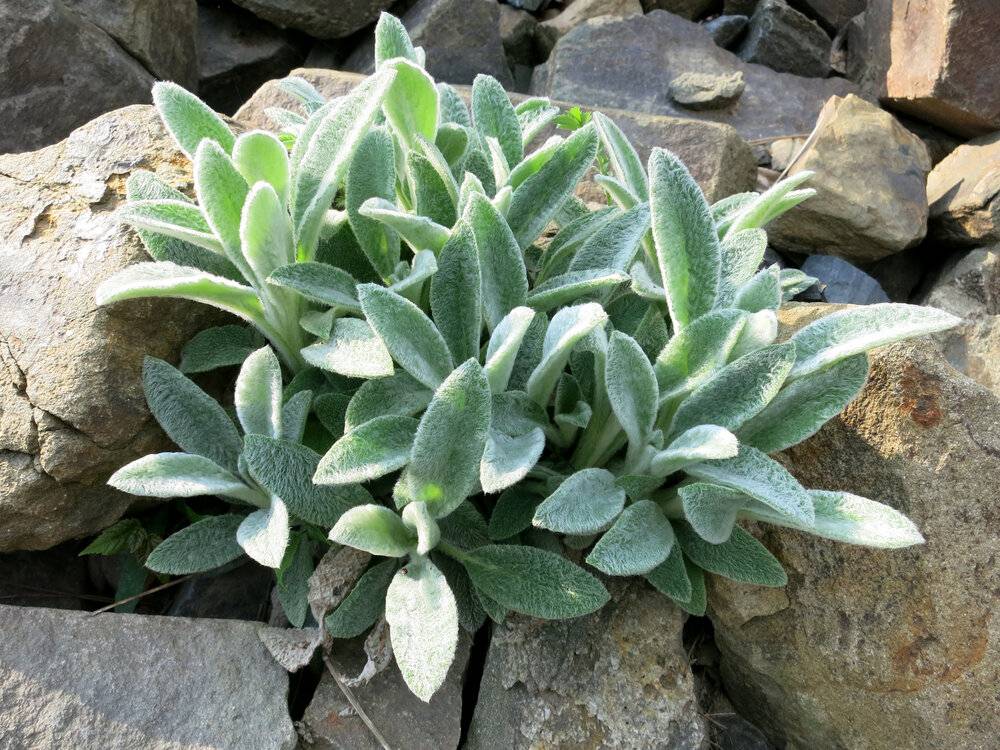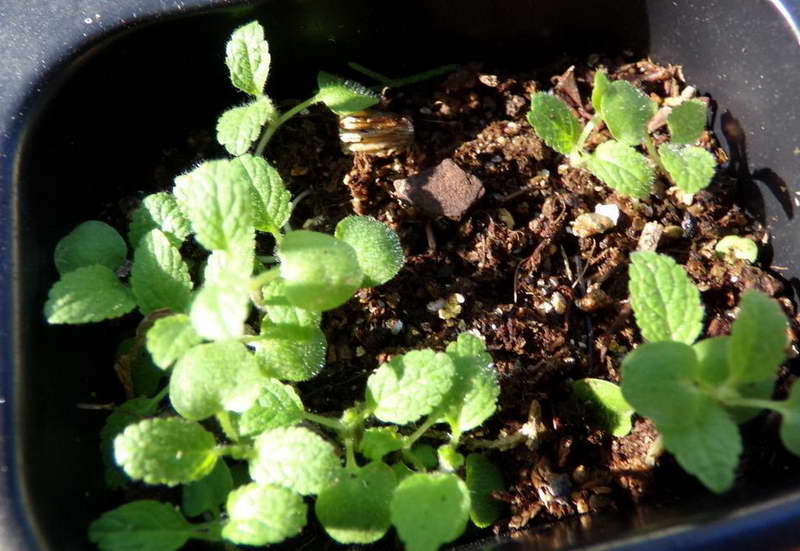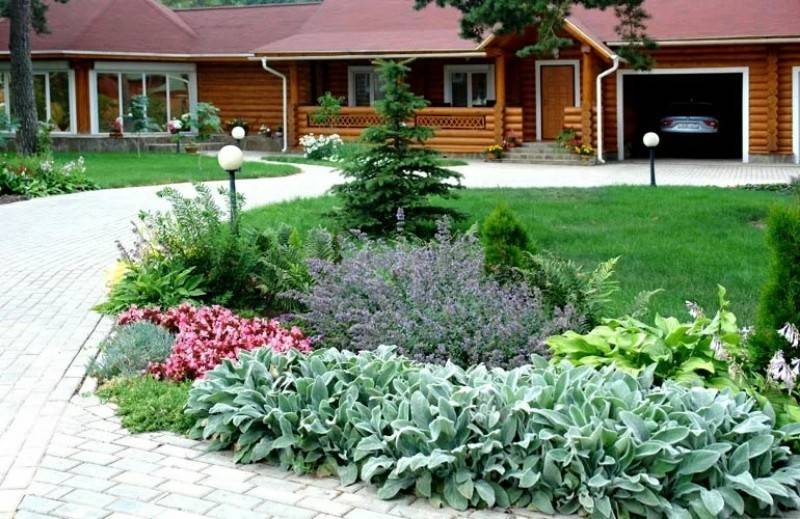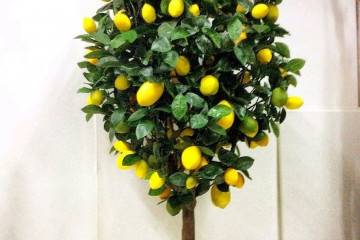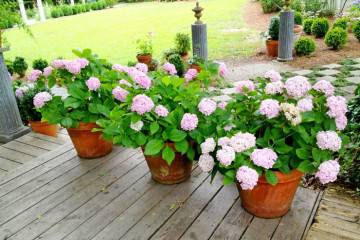Woolly chisel (Stachys byzantina) - planting and caring for the plant
Content:
Woolly chisel, or Byzantine stachis, organically fits into the landscape of the garden. The compact plant with highly decorative leaf blades is especially appreciated by gardeners. The plant is quite capricious in its care, so it will be more difficult for beginners without experience to cope with its cultivation.
What does the woolly purse (Stachys byzantina) look like?
The perennial herb Stachys byzantina lanata was popularly called sheep's ears. The shrub received this name because of the unusual shape of the leaves, which resemble the ears of animals.
What family does it belong to
The evergreen Byzantine chastetz is ranked among the Lamb or Lipocystaceous family. Like the rest of this group, the stachis is low and has slightly serrated leaf margins.
Briefly about the history of appearance
In its natural environment, Chisel grows in the subtropics: the coastal regions of the Black, Mediterranean and Caspian Seas.
Plant characteristics
The height of the woolly lamb's ears is from 20 to 60 cm. At home, the plant, as a rule, has a compact size than in the wild. The multi-stemmed crown of a branched plant. The bright turquoise-green oval leaves are full of lush silvery hairs. The ends of the lower plates are pointed, their pubescence is more scarce and sparse.
Stachis varieties that are most popular with gardeners
Almost all varieties of woolly chisel are in demand in landscape design for their decorative appearance. The most popular species and varieties in home floriculture are Monier's purse, forest (Sylvatica), straight (Stachys Recta), Ambigua, Silver Finch.
Silver Carpet
Stachis Silver Carpet is almost entirely covered with silvery fluff, which makes its color appear shiny gray. The crown of the Carpet is very dense, as the leaves are close to each other.
Striped phantom
The description of this variety is different from the rest. Its leaf plates have white stripes, and small flowers are painted in a bright orange hue.
Sheila macqueen
The smallest variety of woolly stachis, which does not grow more than 15 cm. The plant practically does not bloom, produces only a few peduncles for the entire season.
Big ears
This chisel is also nicknamed the chisel's ears because of its long, dense and fleshy leaves. The length of the plates can reach 25 cm. Their color has a beautiful turquoise hue. The Big Ears straight line is in great demand in landscape design; it is used to decorate personal plots, garden paths and park alleys.
Helen von stein
The officinali variety Helen Von Stein has large, thick leaves with a fluffy surface. They are velvety to the touch and do not lose this ability throughout the growing season.
How the purse reproduces
Stachis can be propagated at home by seed and vegetative methods. In the first case, seedlings are grown, in the other, several methods can be taken: root the cutting or divide the bush into several parts.
Growing from seeds
It is not so difficult to grow a garden perennial and one-year-old purse from seeds. The main thing is to buy high-quality planting material or prepare it yourself.
A shallow wide container is best suited for planting; for convenience, you can choose an elongated container. The recommended manufacturing material is wood or plastic.
The soil for planting must be prepared in advance. The plant is not very picky about its composition, but it is best to buy a special substrate for plants of the stachis genus. If you don't want to spend money on potting soil, you can prepare it yourself by mixing turf soil with a small amount of humus and sand.
Each seed should be visually inspected for defects before sowing. If there are too many of them, you can identify spoiled ones by immersing all the seeds in water. Empty and rotten material will immediately float out.
It is necessary to deepen each seed by 1-2 cm; with greater depth, it will not be able to ascend at all.
After planting, the box with seedlings must be covered with foil to create a greenhouse effect. Twice a week, the shelter should be removed for a couple of hours and the emerging sprouts should be ventilated. In addition, it is imperative to weed and moisten the soil.
Before planting seedlings in open ground, you need to pick. When the sprouts reach a length of 3-4 cm, it is recommended to transplant them into separate small containers or peat pots. Covering seedlings is no longer worth it.
Planting cuttings
It is necessary to cut cuttings from young, but powerful shoots. For each cut, you need to leave 3-4 sheets. Cuttings can be immediately planted in a moistened nutrient medium, or they can be rooted in a container with plain water. It is necessary to transplant seedlings after they give stable shoots.
Dividing the bush
The forest cleaver needs to be updated often; for this purpose, dividing the bush is suitable. In the spring, you need to dig up the plant and use a sharp knife to divide it together with the rhizome into several equal parts. Each of them needs to be planted in a separate place.
Dividing tubers
Tubers are divided in early spring or autumn. After digging up the bush, you need to separate the nodules and leave them in a stimulating and strengthening solution. After that, they can be put away for storage or immediately planted in the garden.
Features of care in the garden
The Byzantine purse, although a capricious plant in its care, however, the measures for its cultivation do not have any particular difficulties in implementation.
What conditions do woolly cleaners like?
The purist loves slightly shaded areas closed from drafts. Prefers light soil with high drainage rates. It does not tolerate waterlogged soil, from which it often gets sick.
The plant is afraid of moisture on its leaves, so do not wet them when watering. It is not recommended to grow a bush in an area that is too open for the scorching sun rays, otherwise burns will appear on the sheets.
Watering
Watering the shrub is necessary only when the soil dries. In summer, 1 watering every 10 days is enough; in dry periods, the interval between procedures should be reduced.
Mulching
Mulching the soil is recommended in spring, this will retain moisture in the soil, reduce irrigation and eliminate the need for weeding. I use crushed stone, dry leaves, sawdust and pebbles as mulch.
Loosening
It is necessary to loosen the soil after each watering; on loamy soil, this procedure is carried out even more often. The loosening depth should be between 3 and 5 cm.
Top dressing
The use of mineral fertilizers during the entire growing season is very important for healthy growth and a beautiful appearance of the rough leaves of the chanterelle. Organics for feeding the bushes should be very rotted, and it needs to be applied only once a season - in autumn or spring. Conventional liquid feeding with non-concentrated preparations is carried out every 1-2 months.
Transfer
Large-flowered stachis need to be transplanted less often than other species, once every 4-5 years. For other varieties, the procedure is carried out every 2-4 years. Agronomists recommend doing this by dividing the bush into several parts, thereby at the same time carrying out reproduction and rejuvenation of the plant.
When and how it blooms
The flowering of the chisel is scarce, small flowers are not particularly decorative.
Types of flowers
The plant has whorled flowers, in the place of which, after flowering, fruits appear. By their structure, they can be attributed to small nuts, inside the outer box are hard large seeds.
Flower shapes
The stachis flower has the shape of a spikelet, which in botany has the term "false ear". Depending on the variety and variety of the plant, it can be colored pink, lilac, blue.
Flowering period
Woolly chisel stachis begins to bloom in late spring (in May), in more severe regions - in June. The plant continues to form buds until August.
Changes in care during flowering
The shrub periodically dissolves flowers throughout the growing season, therefore, there are no special changes in care during this period.
Possible growing problems
The purist is practically not affected by infectious diseases and does not suffer from pests. Problems arise only when the soil is waterlogged.
Pests
Of insects, aphids and spider mites can rarely harm. It is easy to deal with them in the initial stages, it is enough to treat the bushes with soapy water or Bordeaux liquid.
Diseases
The most common disease affecting the purse is root rot. It affects the base of the trunk and rhizomes, from which the leaves fade and begin to fall off. It is necessary to treat the plant by spraying with fungicides, and if the course of the disease is advanced, you will have to get rid of the bush.
Signs of improper care
Sometimes the stachis begins to lose its ornamental leaves. This can happen due to improper watering. Lack of moisture in the soil or excessive waterlogging leads to loss of foliage or its tarnishing. Taking care of the bush means only carrying out certain activities, but also choosing the right site for planting.Often, due to the bright sun, burns appear on the plates, and with strong drafts - loss of foliage.
Use in landscape design
Stachis is often used to decorate garden paths and low decorative compositions. Rock gardens and rockeries will also look beautiful if one of its components is a cleanser. In low flower beds, the plant will make a good tandem with other herbaceous bushes: milkweed, ferns or hosts.
Plants of Byzantine chisel, field chisel, rough chisel and other species fit beautifully into garden compositions. The unpretentiousness of the shrub is fully compensated for by its high decorative effect. The wide variety of varieties of stachis helps to combine it with completely different types of flowering, coniferous and deciduous plants.
